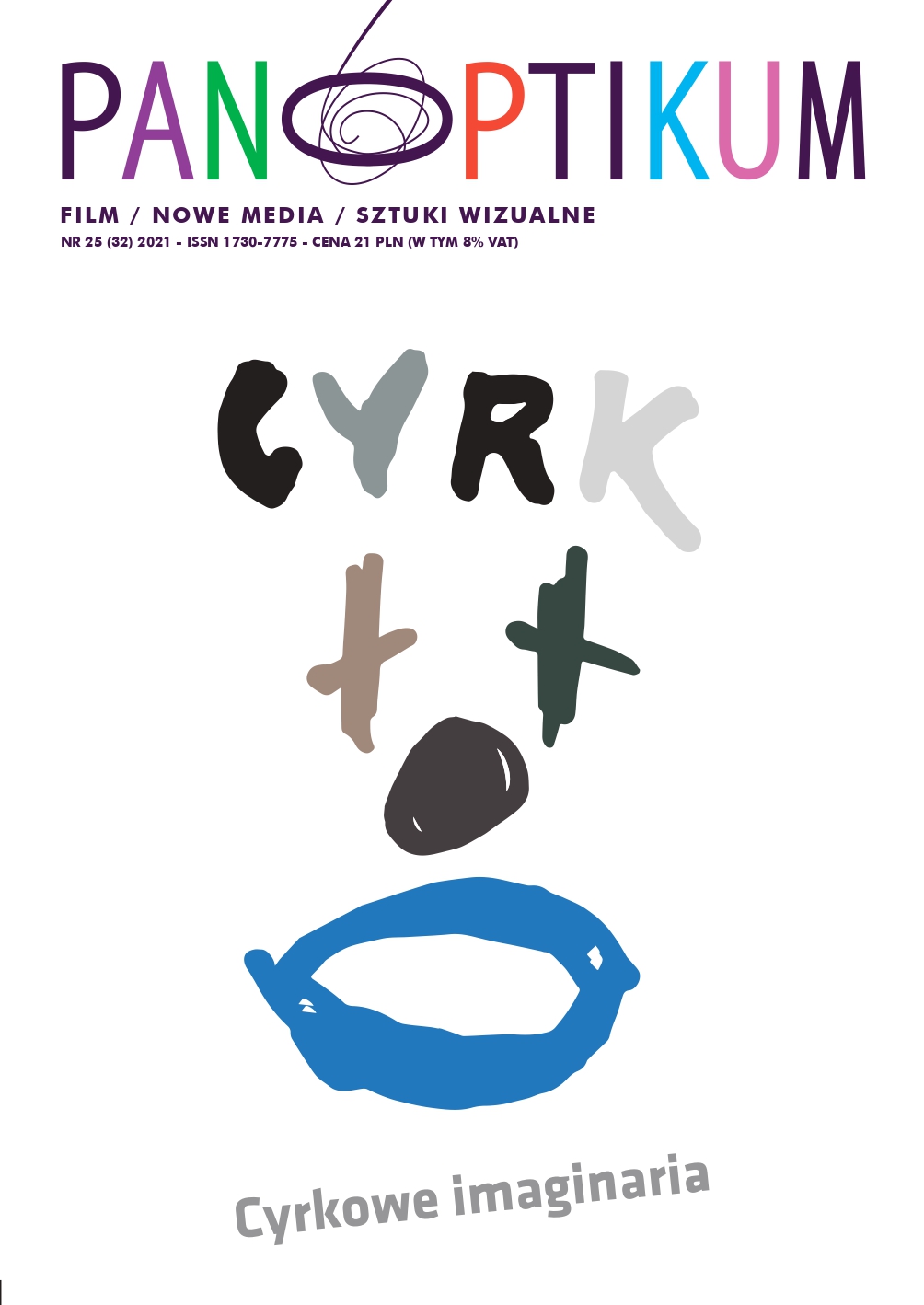Herstoria eksperymentalna: Miss La La
DOI:
https://doi.org/10.26881/pan.2021.25.07Słowa kluczowe:
Miss La La, circus, female artist, herstoryAbstrakt
Anna Olga Brown is a figure who became known in history as Miss Lala. Strong „African Princess”, „Black Venus”, with iron jaws which could hold the weight of several people as well as an exploding cannon. Her trapeze stunts were admired on the biggest European stages. She was born in Szczecin, to a black father and a white mother; the youngest of four siblings. She lived in a time of colonialism and racism. At a time when women still had no right to vote and their role was restricted to the private sphere. Her muscular, circus body went beyond the normative canons of female beauty and with its strength challenged dominant beliefs. It fascinated and disturbed. For advertising purposes it was alternately normalized and exoticised. Her biography is full of blank pages, uncertainties, and speculations. The following article is another attempt to read herstory, conducted within the framework of experimental history.
Downloads
Bibliografia
Adams, K., Keene, L.M. (2012). Woman of the American Circus, 1880–1940. Jefferson, North Carolina: McFarland and Company Inc. Publishers.
Asbury, H. (1933). The Barbary Coast. https://archive.is/20061022120708/http://www. sfgenealogy.com/sf/history/hbtbc6.htm (dostęp: 30.01.2021).
Averley, H. (2016–2017). War Circus. https://www.labonche.net/ (dostęp: 30.01.2021). Bassi, J. (2013). La grande guerre d’un homme de spectacle. https://joannabassi.word- press.com/2013/11/09/813/?fbclid=IwAR1AqzbgGIpcIKw7_1uriuZcfzVbhgpjHItY- NeQjq37ywtKfpKs9bCaBsk0 (dostęp: 30.01.2021).
Brown, M. (2007). Miss Lala’s Teeth: Reflections on Degas and Race, „The Art Bulletin”, vol. 89, no. 4 .
Cullen, F. (2004). Vaudeville Old & New: An Encyclopedia of Variety Performances in America. New York: Routledge.
Derrida, J. (1978). Różnia (différance), przeł. J. Skoczylas, [w:] M. Siemek (red.), Drogi współczesnej filozofii. Warszawa: Czytelnik.
Desbonnet, E., Surier, A. (1910) Acrobates et jeux du cirque, „La Culture physique: revue bi-mensuelle illustrée”, nr 125.
Durrow, H. (2013). Mixed Experience History Month 2013: Manuel Woodson, contortionist extraordinaire. https://lightskinnededgirl.typepad.com/my_weblog/2013/05/mixed-experience-history-month-2013-manuel-woodson-contortionist-extraordinaire.html (dostęp: 30.01.2021).
Eksteins, M. (2014). „Święto wiosny”. Wielka wojna i narodziny nowego wieku. Poznań: Zysk i S-ka Wydawnictwo.
Fei, E. (2017). As Above, So Between: Configuring Miss Lala as a Mixed Race Subject. College of Liberal Arts & Social Sciences, dysertacja 238. https://via.library.depaul.edu/ etd/238 (dostęp: 30.01.2021).
Frueh, J., Fierstein, L., Stein, J. Kaplan, J. (2000). Picturing the Modern Amazon. New York: Rizzoli.
Fanon, F. (2020). Czarna skóra, białe maski, przeł. U. Kropiwiec. Kraków: Karakter.
Kristeva, J. (2008). Potęga obrzydzenia: esej o wstręcie, przeł. M. Falski. Kraków: Wydawnictwo Uniwersytetu Jagiellońskiego.
Kuhlmann, A. (2013). Ambiguous Duty Black Servants at German Ancien Régime Courts, [w:] M. Honeck, M. Klimke, A. Kuhlmann (red.), Germany and the Black Diaspora: Points of Contact. New York: Berghahn Books.
Kuźma-Markowska, S. (2014). Herstory (herstoria), [w:] Encyklopedia gender: płeć w kul- turze. Warszawa: Czarna Owca.
Martin, J. (2009). The “Tragic Mulatto” in Three Nineteenth-Century German Antislavery Texts, „German Review Studies”, nr 32.
Lilley, R. Koslin. https://www.myoldarndtlilley.com/family-research/nathusius/koslin-koszalin/ (dostęp: 30.01.2021).
Mikulska, A. (2010). Rasizm w Polsce. Helsińska Fundacja Praw Człowieka. https:// forummigracyjne.org/files/170/Rasizm%20w%20Polsce%20-raport%20HFHR.pdf (dostęp: 30.01.2021).
Munslow, A. ( 2017). Historia jako eksperyment, „Dialog”, nr 7–8.
Pitts, J. (2020). Afropean. Notes from Black Europe. Londyn: Penguin Random House.
Phyllis Jones, C. (2002). Confronting Institutionalized Racism, „Phylon”, vol. 50, no. 1/2.
Saltarino, S. (1987). Artisten - Lexikon. Leipzig: Zentralantiquariat der DDR.
Stallybrass, P., White, A. (1986). The Politics and Poetics of Transgression. New York: Cornell University Press.
Szyjkowska-Piotrowska, A. (2016). Po-Twarz. Przekraczanie Widzialności w Sztuce i Filozofii. Warszawa: słowo/obraz terytoria.
Tiedemann, F. (1836). On the Brain of the Negro, Compared with That of the European and the Orang-Outang, „Philosophical Transactions of the Royal Society of London”, vol. 126.
Tait, P. (2005). Circus Bodies. Cultural Identity in Aerial Performance. New York: Routledge.
Truzzi, M., Truzzi, M. (1974). Notes Toward a History of Juggling, „Bandwagon”, vol. 18, no. 2.
Wieczorkiewicz, A. (2002). Kolonizacja dzikich ciał, „Teksty Drugie”, nr 5(77).
Wieczorkiewicz, A. (2013). Czarna kobieta na białym tle. Dyptyk biograficzny. Kraków: Universitas.

 Uniwersyteckie Czasopisma Naukowe
Uniwersyteckie Czasopisma Naukowe









